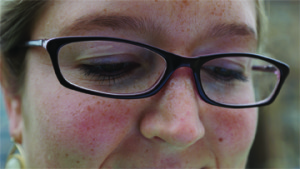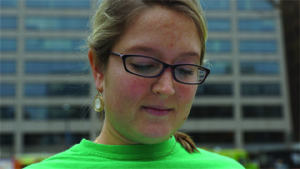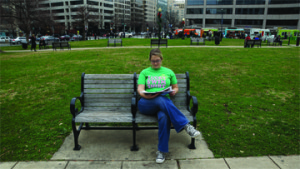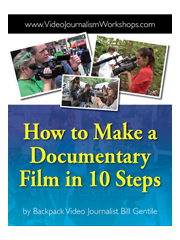A Lesson from Video #3 of the Video Journalism Workshop, Shots 1-5 out of the ABCs of the Visual Language
Every visual story you see or tell uses the same visual alphabet, or what I call the ABCs of the visual language. Our written alphabet contains 26 letters. The visual alphabet contains fewer than half that and is covered in more detail in Video 3 of the Video Journalism Workshop.
These definitions may differ somewhat between filmmakers, just like slang words can mean one thing in one part of the country and something different in another. But these are the fundamental shots that are used for shooting a documentary. You should learn them and make them part of your professional vocabulary. Later on we will pull out just a few of these when we explore the Six-Shot System but for now this is what you need.
1. Extra (Extreme) Close-Up (XCU)
In the context of a face shot, the XCU would be just the eyes, or the glasses and the eyes. Or maybe just the hands typing on a keyboard.
2. Close-Up (CU)
The next shot is the Close-Up (CU), which is pretty much from the top of the head to just below the chin. You can take off some of the hair line, but you can never take off the chin, for two reasons. The first is that the audience wants to read the subject’s mouth and expression, which are critical in deciphering whether a person is telling the truth or not. The second reason is that editors and producers might want to put the person’s name under his/her face and you need the space at the bottom of the frame so as not to have lettering appear over the subject’s mouth. We refer to this lettering as title or lower third.
3. The Medium Shot (MS)
The Medium Shot runs from the top of the head to the waist or just below your belt. We need to see the belt.
4. Wide Shot (WS)
The Wide Shot (WS) includes everything from head to your toes.
5. Extra Wide Shot (XWS)?
An Extra Wide Shot (XWS) is even wider than a WS and might include visual information that’s in front of and behind the subject. The XWS also is referred to as a “Master” or “Establishing” shot because it shows where all the elements in a scene are located in relation to each other. You will understand this better when we get to the Six-Shot System, which we’ll go over in a future email.
Thank you for visiting our site and hope these lessons on making video documentaries are helpful. We would love to hear your feedback and questions. If you would like to receive emails like this and our free pdf book Tip, Tools and Resources for Making Documentaries please subscribe in the upper right corner.
About the ONLINE Video Journalism Workshop Course?
Discover the secrets of creating powerful video documentaries in the ONLINE Video Journalism Workshop course. You’ll enjoy an intensive 14-part immersion in the craft of learning how to make documentaries.
The course on making video documentaries covers the gamut of the storytelling craft from the genesis and shaping of story ideas, to shooting powerful images that drive the story, to capturing and using sound. You learn about script writing, narration, and editing with portable computers and modern editing software. Please visit the Video Journalism Workshop home page for more details.
Connect with us on Facebook at ?https://www.facebook.com/VideoJournalismWorkshops






